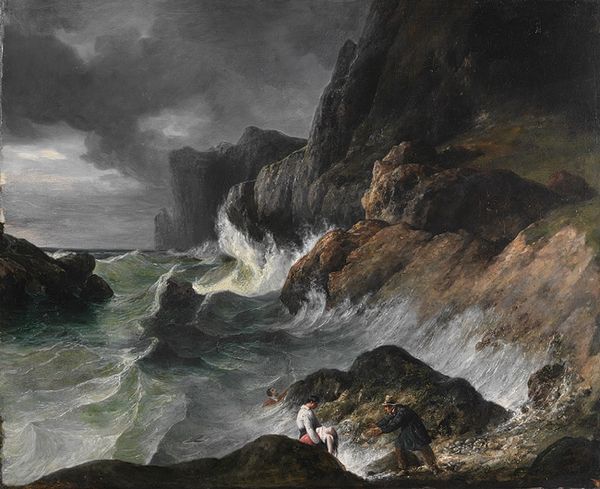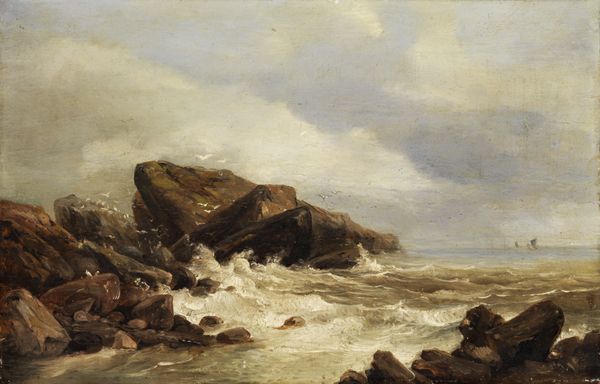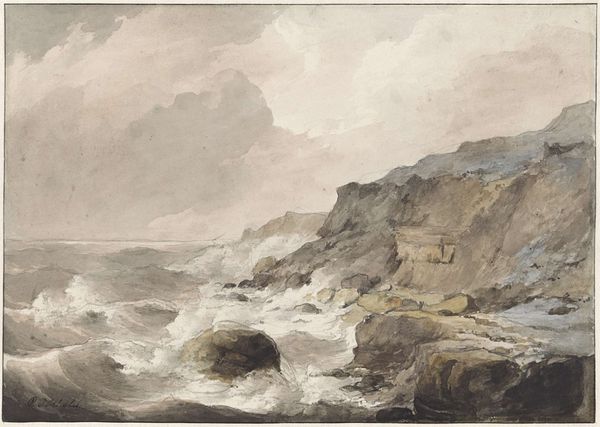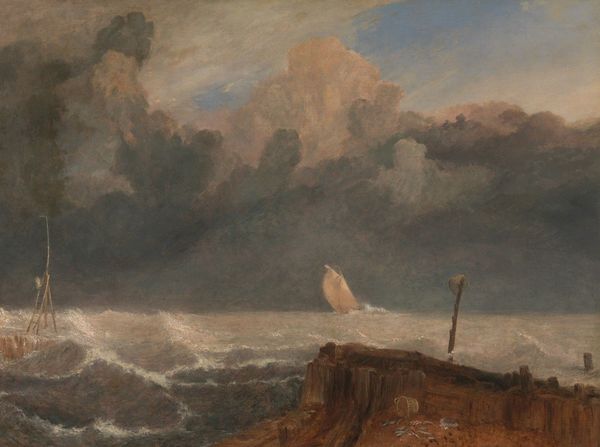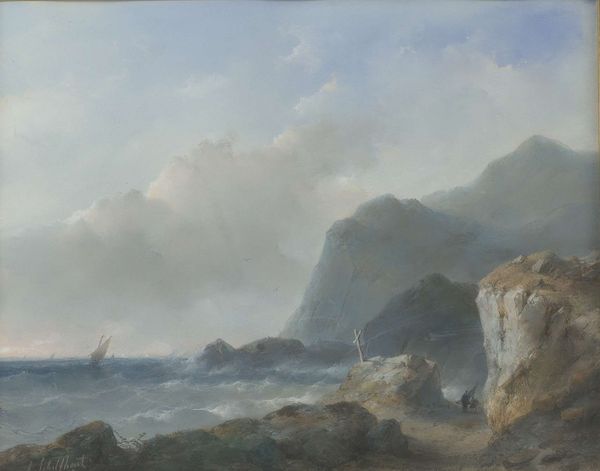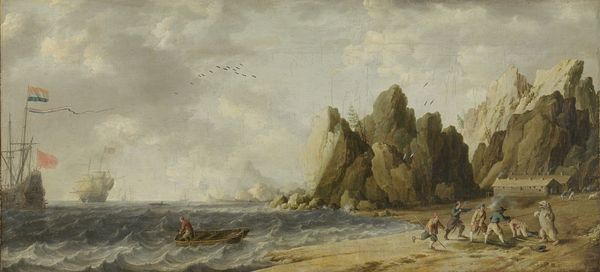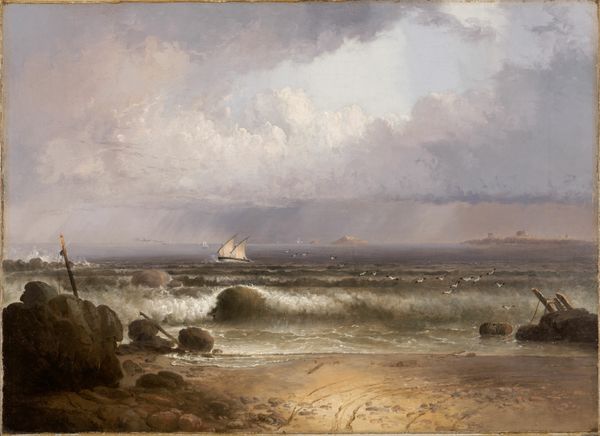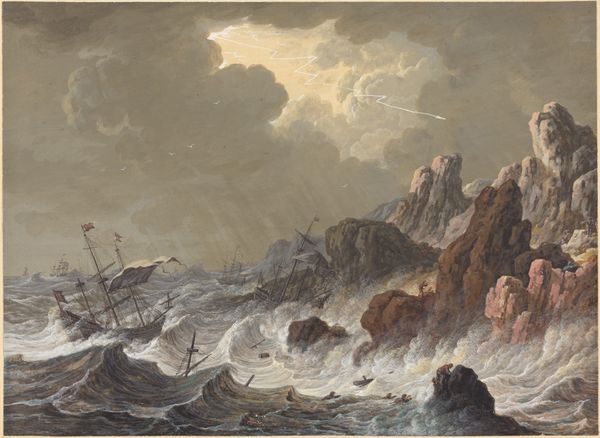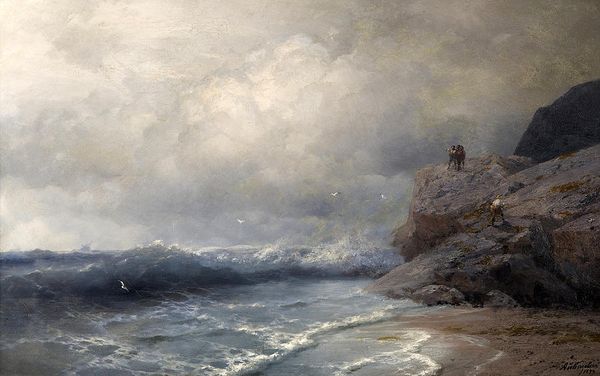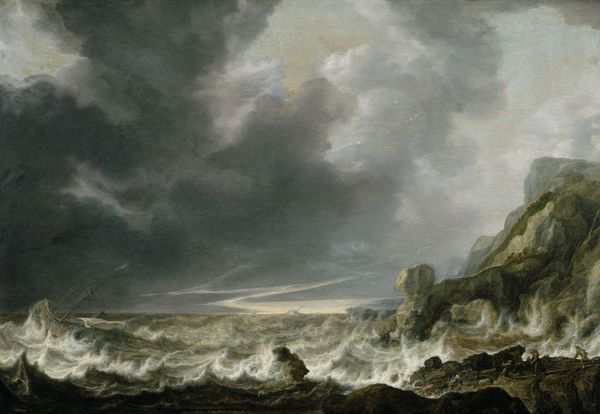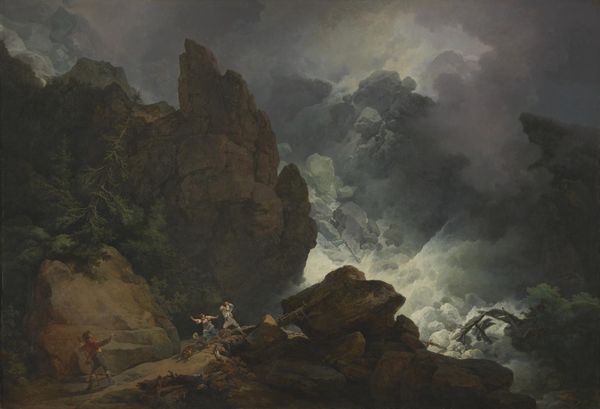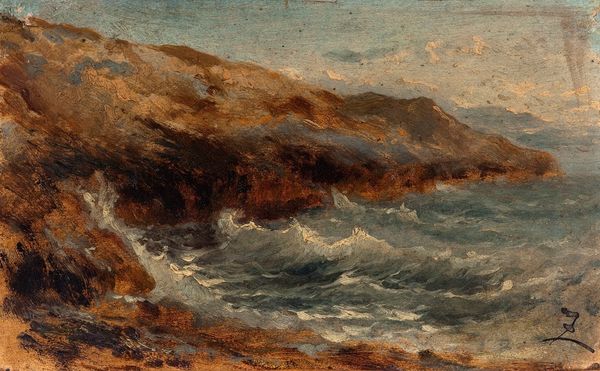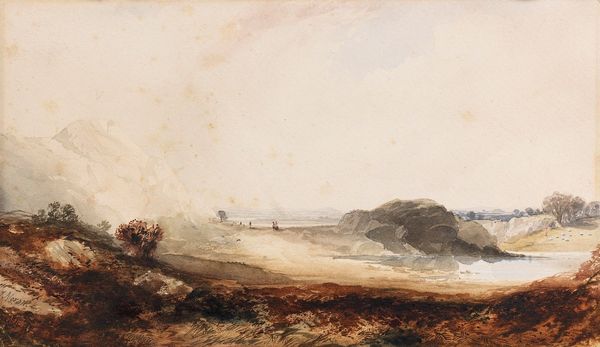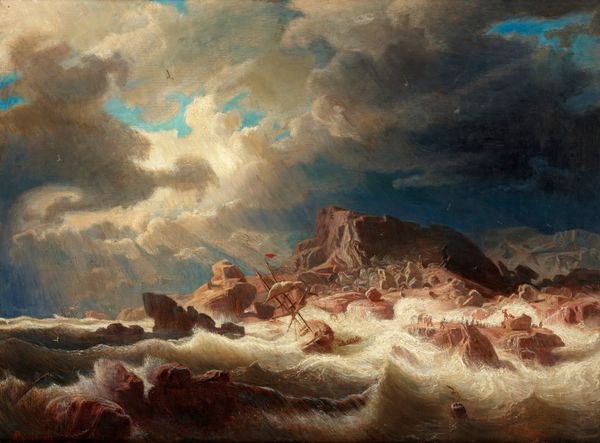
drawing, watercolor
#
drawing
#
water colours
#
landscape
#
watercolor
#
romanticism
#
realism
Dimensions: sheet: 26 × 42.7 cm (10 1/4 × 16 13/16 in.)
Copyright: National Gallery of Art: CC0 1.0
Editor: Here we have Gabriel Hippolyte Lebas' watercolor drawing, "A Rocky Seacoast in a Storm," from around the 1840s. It really evokes a sense of foreboding, doesn’t it? A shipwreck in the distance and these imposing cliffs. What strikes you most about this work? Curator: Well, it’s fascinating how this small watercolor engages with the grand tradition of Romantic landscape painting, but with a definite awareness of its own position. Consider the 1840s: photography is emerging, challenging painting's role in representing the world. Editor: So, how does that relate to this seascape? Curator: Lebas isn't simply trying to capture a scene with photographic accuracy. Look at the deliberate, almost theatrical composition. The storm, the shipwreck—these were well-worn symbols of nature's power. But rendered in delicate watercolor, the effect is…domesticated. It's as if he’s acknowledging the increasingly mediated relationship between humans and the sublime. Do you think an early photography can be the inspiration of this type of drawings? Editor: That's a great point, it really flips that idea of the all-powerful nature on its head. I guess, seeing the rise of industrialization at that time, and cities changing, Lebas tries to re-image it through art? Curator: Precisely. The social and cultural role of art was shifting, and artists were very aware of these changing conditions. He uses established Romantic motifs but in a self-aware manner. Editor: That is very insightful, thanks! This recontextualizes how I see similar paintings from that time period too. Curator: Indeed. Considering art as a dialogue with its own era offers a richer, more dynamic appreciation.
Comments
No comments
Be the first to comment and join the conversation on the ultimate creative platform.
